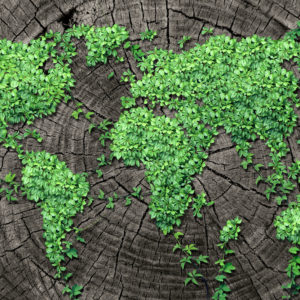In the late 1700s, Thomas Malthus became convinced that the combination of a fact and a trend spelled doom for the human race. The fact was that more than 95 percent of the world’s population lived in extreme poverty. The trend was that the world’s population was growing exponentially. The conclusion was clear: The human race was headed for starvation and extinction if population growth wasn’t controlled. But something interesting happened over the subsequent two centuries that proved Malthus wrong.
Malthus’ error was ironic because he greatly underestimated by how much the world population would grow. At the time Malthus wrote, it had taken humans their entire history to reach a world population of 1 billion people. Today, humans add that many people to their ranks each decade.
This massive population growth should have made Malthus’ predictions of doom and gloom all the more prescient, but it didn’t. And the reason is counterintuitive: Human beings are not, in the end, an unmitigated drain on the earth’s resources.
Human beings do consume resources, but they create more than they use. Wood wasn’t a resource until humans discovered how to fell trees and cut lumber. Coal wasn’t a resource until humans discovered how to mine and burn it. Oil wasn’t a resource until humans invented methods for extracting and refining it. Uranium wasn’t a resource until humans tamed the atom.
Malthus predicted resource depletion. What transpired was resource creation. Not only did people create resources, they grew those resources faster than the population. According to United Nations’ figures, extreme poverty, which exceeded 95 percent in Mathus’ day, dropped to 80 percent by the 1900s, 60 percent by the 1960s, to less than 10 percent today.
Contrary to Malthus and modern-day Malthusians, the world has become a much, much better place as the human population has exploded.
And we’re not simply rising out of poverty; the nature of poverty itself is changing.
A poor person’s standard of living in a developed country today exceeds an average middle-class person’s standard of living a century ago, and rivals a rich person’s standard of living two centuries ago. U.S. Census surveys reveal the near universality of a high standard of living among Americans, including the poor. More than 80 percent of U.S. households have washing machines and clothes dryers. Almost 100 percent have refrigerators, stoves, televisions and phones. Nearly 100 percent report no leaking roofs, no broken windows, no exposed electrical wiring, no plumbing problems, no holes in their walls or floors.
And the good news isn’t limited to living arrangements. According to the FBI, the rate of firearm deaths is down 50 percent over the last 30 years. The rate of non-fatal firearm crimes is down 75 percent. Worldwide, the rate of deaths due to wars is down 95 percent. Child labor rates are down 50 percent. Globally, income inequality is down, gender inequality is down, and longevity, education and income are all up. Even sulphur-dioxide emissions and deaths due to air pollution are down by 30 percent.
Both at home and globally, we are making tremendous strides in solving problems across the board. We still have further to go and always will, but it’s good to pause once in a while, identify what we’ve done well, figure out how we’ve managed it, and consider how it can be improved and replicated.
It’s also good to remember how good we have it, comparatively speaking. The poor now live better than the rich did just a few generations ago. If that trend continues, and there is no reason to believe it won’t, then the future is bright indeed.

